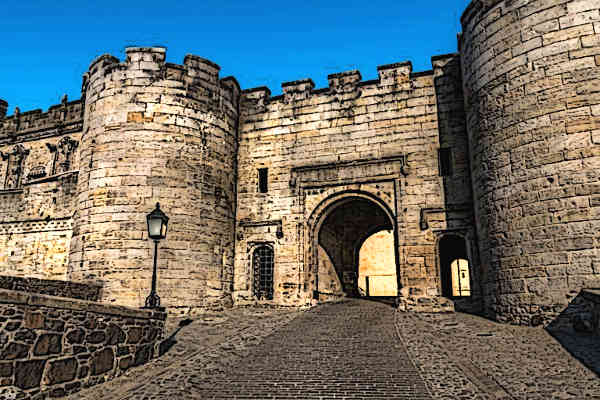William Wallace played a central role in the Scottish Wars of Independence fought at the turn of the 13th century.
For a time, he was very successful in routing the invading English armies and securing his control over the Scottish realm.
By the beginning of the 14th century, however, the Scottish cause was lost and Wallace was captured by the English in 1305. He was subsequently tried, found guilty of treason, and executed.
The event which single-handedly brought Wallace to prominence both in England and Scotland was the 1297 Battle of Stirling Bridge.

William Wallace was a Scottish knight, born in 1270 and died in 1305.
According to modern estimates, the Scottish army in this battle was significantly outnumbered by a larger English army but a bridge over the river played a crucially important role in combat.
The English had to cross the bridge slowly, two or three men at a time. The Scottish army under Wallace waited at the other side of the bridge and at a suitable time, launched their attack.
In the attack, the Scots surrounded the English army on their side of the bridge and broke its link with the rest of the English army on the other side. The surrounded English force was then routed and the battle became a decisive victory for the Scots.

Stirling Castle in Scotland – a monumental edifice specially constructed in honor of William Wallace

William Wallace Statue in Aberdeen – William Wallace was one of the most notable Scottish knights of the medieval period.
The national victory Wallace secured for Scotland was short-lived and another English army reached Scottish Scotland in early 1298. Although Wallace tried to avoid a direct confrontation with the English army, the confrontation came about near Falkirk.
At the Battle of Falkirk which then ensued, the English made effective use of Welsh long-bowmen who were able to inflict heavy damage on the Scots. The Scottish cavalry consequently fled and the English secured an overwhelming victory over Wallace’s army.
Following the defeat of the Scots in 1298, Wallace spent many years outside Scotland. He returned to Scotland in 1304 but his stay was short-lived.
In 1305, he was betrayed to the English by a Scottish knight and was captured. He was then taken to Westminster Hall where he was tried for treason and sentenced to death.
His prominent role in the Scottish Wars of Independence against the English earned William Wallace the status of a national hero in subsequent centuries.
Although Wallace didn’t actually secure the freedom of Scotland, he was seen as a crucial Scottish leader who raised the banner of rebellion with at least some significant success against the English.
It was building on his efforts that Robert The Bruce ultimately freed Scotland from English control in 1306, thereby winning freedom for the country.
Learn More about William Wallace